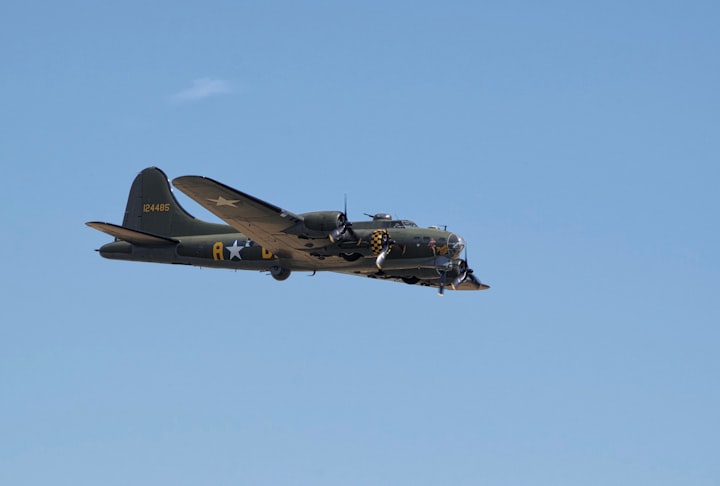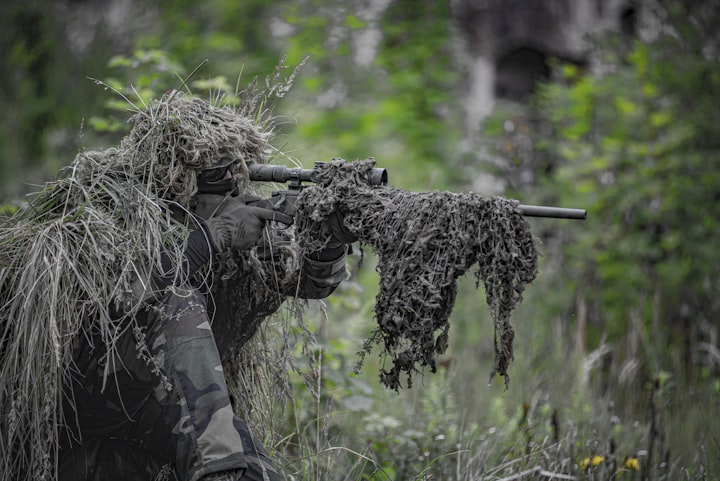The Story Of Dam Busters
Bomber Airplanes
It’s after midnight on the 17th of May, 1943.
It’s a full moon.
Wing Commander Guy Gibson cuts through the air in his Lancaster
headed straight over the Möhne Dam in Germany.
He’s got to be fast, low and deadly accurate.
Behind him in his modified Avro Lancaster already spinning
is a new kind of drum-shaped weapon called a Bouncing Bomb.
Gibson is leading Royal Air Force 617 Squadron
in a mission code-named Operation Chastise.
Though his team will become famous under a simpler name…
The Dam Busters.
Gibson is highly exposed in the run up to the Möhne Dam.
Flak guns are blazing to take him out of the sky as he readies his bomb.
It’s designed to bounce across the water
and land at the base of the dam wall before detonating.
With enough backspin on it the drum should bounce perfectly
and be pushed against the wall as the charge goes off.
Sounds simple enough.
However Operation Chastise is anything but simple.
Gibson knows he must drop the bomb at a height of exactly 60 ft
if it is to bounce across the water
avoiding the underwater nets designed to stop enemy torpedoes
and not bounce up into the plane.
Flying this low over water
meant that the standard altimeter was useless.
Spotlights attached to the underside of the plane are angled
so their reflection converges at precisely 60 feet.
Luckily the water over the dam is still
and its glassy surface is just what the crew need.
Using an impromptu sight that aligned with the towers on the dam
made sure that the correct distance to drop.
Anti-aircraft fire and flak is buzzing all around them
and the gunner fires back with tracer rounds
to try and intimidate the German gunners.
Slowly, slowly, the towers line up with the sight.
Time to ditch that drum!
Gibson releases the bomb.
It hits the lake,
and after 3 bounces collides with the dam and sinks below the waterline.
Depth fuses ignite the device
and an epic torrent of water shoots skyward as it explodes.
Attacking the German water supply removes their ability to generate electricity
and severely hampers production of steel.
Pulling up and over the dam
Gibson and his crew watch the giant plume,
their hearts in their mouths waiting for the dam to burst.
There are a tense few seconds as the crew watch.
Is this a bomb that will break the dam?
Will it crumble?
It doesn’t.
There’s sound and fury, leading ultimately to nothing.
The first bomb was 150 ft away from the center of the wall.
This is a top secret new device
that has never been tested in the field
and the men must have wondered if it could actually work.
Next up is Gibson’s Deputy, John Vere Hopgood.
His Lancaster had already sustained damage on the flight from England.
Skimming low and fast he starts his attack run.
Unfortunately luck isn’t on his side.
Anti-aircraft fire hits the plane in the engines and on the starboard wing.
His Bouncing Bomb is dropped
but mistimed in the commotion, going off target.
It clears the dam, landing on a power station.
Hopgood’s Lancaster AJ-M is fatally damaged.
Hopgood told his crew,
“Get out you damn fools.
If I only could get another 300 ft.
I can’t get any more height.”
Three of the crew manage to bail out.
But the wing gives way and the plane crashes into a field with Hopgood at the controls.
Gibson swoops back into the fray,
to flank Australian pilot Harold Brownlow Martin.
as he lines up his attack run.
The Wing Commander bravely takes the flak,
giving Martin as clear a shot as possible at collapsing the dam.
When Martin doesn’t succeed,
he flanks Squadron Leader Dinghy Young,
who carries bomb No.4.
Gibson is still drawing fire from the enemy,
heading south to create a distraction.
Young delivers his payload,
yet the target still holds.
Could it be that this latest device is flawed
and these young men are risking all for nothing?
A lot rides on the fifth bomb.
Flight Lt Maltby is at the Lancaster’s controls.
Accompanied by Gibson and Martin, he releases the drum.
The resulting column of water is a staggering 1,000 feet + high,
but has the impact been enough?
617 Squadron realize the dam is standing solid.
Another strike is readied
but just as fellow Aussie Dave Shannon gears up to drop bomb No.6
there’s a rumble and tonnes of concrete collapses as the dam gives way.
Spectacularly so!
Maltby had caused a breach,
releasing millions of gallons of water into the Ruhr Valley.
The men are elated.
It works!
But there’s no time to celebrate.
The Möhne Dam is only the first target for the RAF tonight.
Approximately 15 minutes away by air
is the Eder Dam, by the Eder River in north Hesse.
The awkward positioning of the Eder Dam,
makes approaching the dam a challenging task.
As well as flying in at night,
the run up to the dam is rather short
and Gibson’s team have to make a 90 degree left turn to access it.
A lot of careful maneuvering is needed before they can even attempt a strike.
This must have been hellishly frustrating for 617 Squadron,
after numerous attempts to bring down the Möhne Dam.
Shannon bombs the target to no effect.
Henry Eric Maudslay drops his drum but is late,
creating an explosion at the dam’s crest.
The blast catches his plane at the back,
though he manages to keep his Lancaster in the air
and makes for home.
Gibson called out to Maudslay asking,
“Are you ok?”
A faint signal came in reply,
“I think so. Stand by…”
No further contact with the aircraft was ever made.
Les Knight, another Australian, flies in
and successfully demolishes the Eder Dam with a decisively deadly strike.
One of the crew later recalled, it was,
‘as if some huge fist had been jabbed at the wall,
a large almost round black hole appeared
and water gushed as if from a large hose.’
The final target was the Sorpe Dam in North Rhine-Westphalia.
While the Dam Busters were working miracles that night,
they couldn’t pull another one out of the bag.
The dam had to be left intact.
19 Lancasters had been despatched in 3 waves.
53 men had lost their lives.
These included the loss of Maudslay and his crew,
who were hit by anti-aircraft fire at Emmerich,
never making it back to England.
The surviving Dam Busters were decorated
in a service at Buckingham Palace.
When interviewed about the operation later that year
Wing Commander Gibson commented:
“Normally you don’t know when you’re going to die…
but that raid on the dams was the one time
when we knew that we were going to die,
or not die as the case may be.
The hair which was hanging on our lives was very thin.
There’s a funny, empty feeling in the stomach
but you’re not frightened.”
He received the Victoria Cross.
Sadly Gibson perished in 1944, after crashing in the Netherlands
in mysterious circumstances.
Germany rebuilt its wrecked dams within months,
leading some to say that the operation had done little more
than make a dent in the German war effort.
What can’t be disputed is the Dam Busters’ effect on British morale.
It was also a stunning act of bravery,
with the men training for only 6 weeks
and not having a clue what the mission was going to be
until the day they flew it.
Incredibly brave men
in desperate times.
The classic 1955 film immortalizes that dramatic night,
ensuring 617 Squadron and their legacy will never be forgotten…
About the Creator
Harry Trasmonte
I enjoy writing stories Sci- Fi, Action, as my past time..I also do work Math problems and computer games..






Comments
There are no comments for this story
Be the first to respond and start the conversation.